Mystery Activities for Kids: Unlocking the Power of Play and Problem-Solving
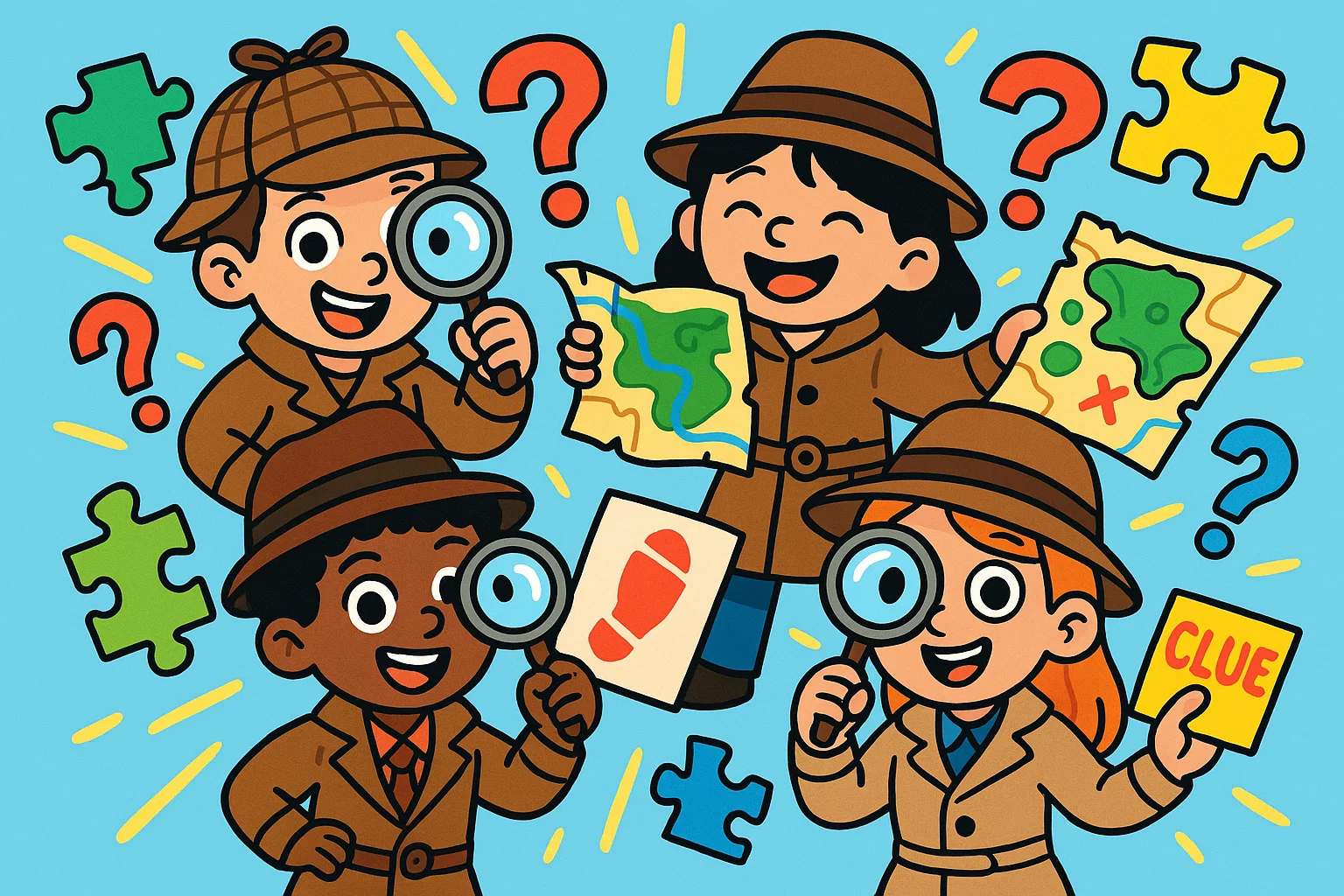
If you’re looking for an activity that blends fun with learning, mystery games for kids are a perfect choice. With their natural curiosity, children love solving puzzles and clues, making them little detectives in play. These activities go beyond simple entertainment—they build critical thinking, strengthen problem-solving, and are great for family nights or rainy days indoors. From backyard treasure hunts to escape room challenges, mystery play gives kids the joy of the “Aha!” moment while boosting confidence and creativity.
Benefits of Mystery Activities for Kids
Mystery games and detective play are more than just entertainment; they are powerful developmental tools. These games encourage children to use their brains in ways that traditional learning methods often overlook, providing an excellent foundation for future academic success.
Boosting Critical Thinking and Problem-Solving
At their core, every good mystery requires a child to use logic. To solve the case or find the hidden item, kids must analyze a series of clues, discard irrelevant information, and synthesize the remaining pieces into a coherent theory. This is the essence of critical thinking.
| Skill Developed | How Mystery Games Help |
| Deductive Reasoning | Analyzing general clues to reach a specific conclusion (e.g., If the footprints are small, it must be the little brother.) |
| Analytical Skills | Breaking down complex problems (puzzles, riddles, secret codes) into manageable steps. |
| Observation | Carefully examining a mystery item or scene for hidden details, similar to a real-life detective. |
Encouraging Teamwork and Collaboration
While a child can certainly solve the mystery alone, the most engaging fun activities are often group-based. When children work together to solve different challenges, they practice vital social skills. In a family game scenario, or during a themed party, children learn to assign roles, listen to different perspectives, and compromise. Kids will love working as a team of secret agent partners!
Inspiring Creativity and Imagination
Mystery stories and role-play give children permission to step into new personas. Pretending to be a famous detective, a daring secret agent, or even a classic character like Nancy Drew sparks their imagination. They may invent their own backstories, draw maps of their secret hideout, or use invisible ink to write secret messages, all of which are fantastic exercises in creative expression and fun sleuthing play.
Building Confidence Through Challenges
There’s a genuine sense of accomplishment when a child successfully completes a tricky logic puzzle or deciphers a complicated code. When kids feel that sense of mastery—that they were the ones who used their detective skills to unlock the mystery—their self-esteem soars. This repeated success in a safe, playful environment teaches them to approach new, difficult tasks with curiosity, not fear.
Indoor Mystery Activities for Kids
When outdoor play isn’t an option, or you need a quiet activity, the house is the perfect game setting for indoor sleuthing.
Mystery Box Games
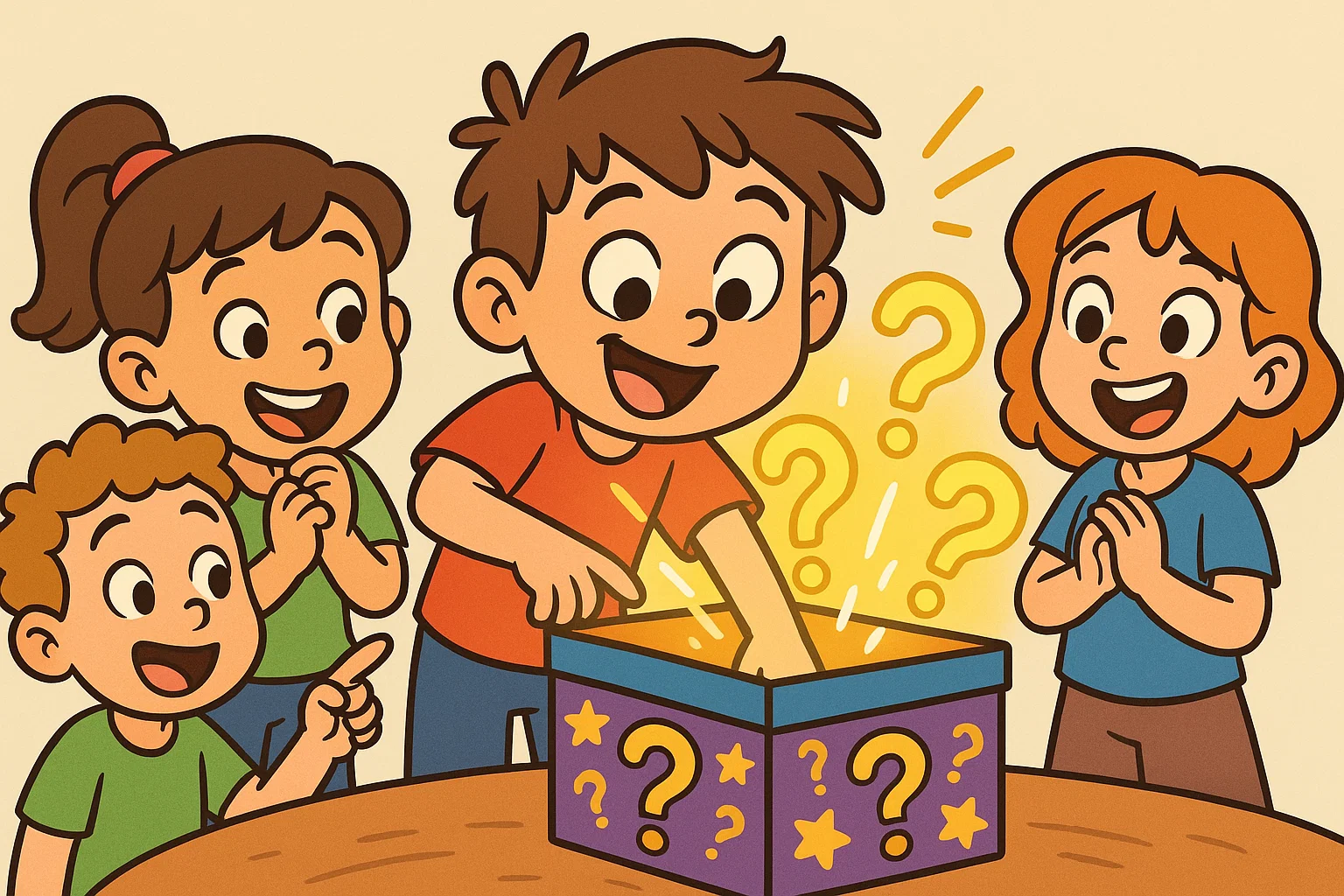
A mystery box is a container filled with various items that children must identify using only touch, or by following a series of clues left on the box.
- Sensory Guessing: Place a few common, textured items (a feather, a piece of sandpaper, a rubber duck) inside, and have your little detectives guess what they are without looking.
- Clue Challenge: Fill the box with an item, then place riddles or clues around the room that lead to the item’s identity.
Invisible Ink and Secret Messages
This classic spy game is a huge hit with kids, who love to feel like they are sharing a secret. You can easily make invisible ink using a cotton swab dipped in lemon juice.
- Process: Write a secret message on a piece of white paper, let it dry completely, and then instruct your child to hold the paper near a lightbulb or heat source (with adult supervision!) to reveal the text.
Fingerprinting and Detective Science
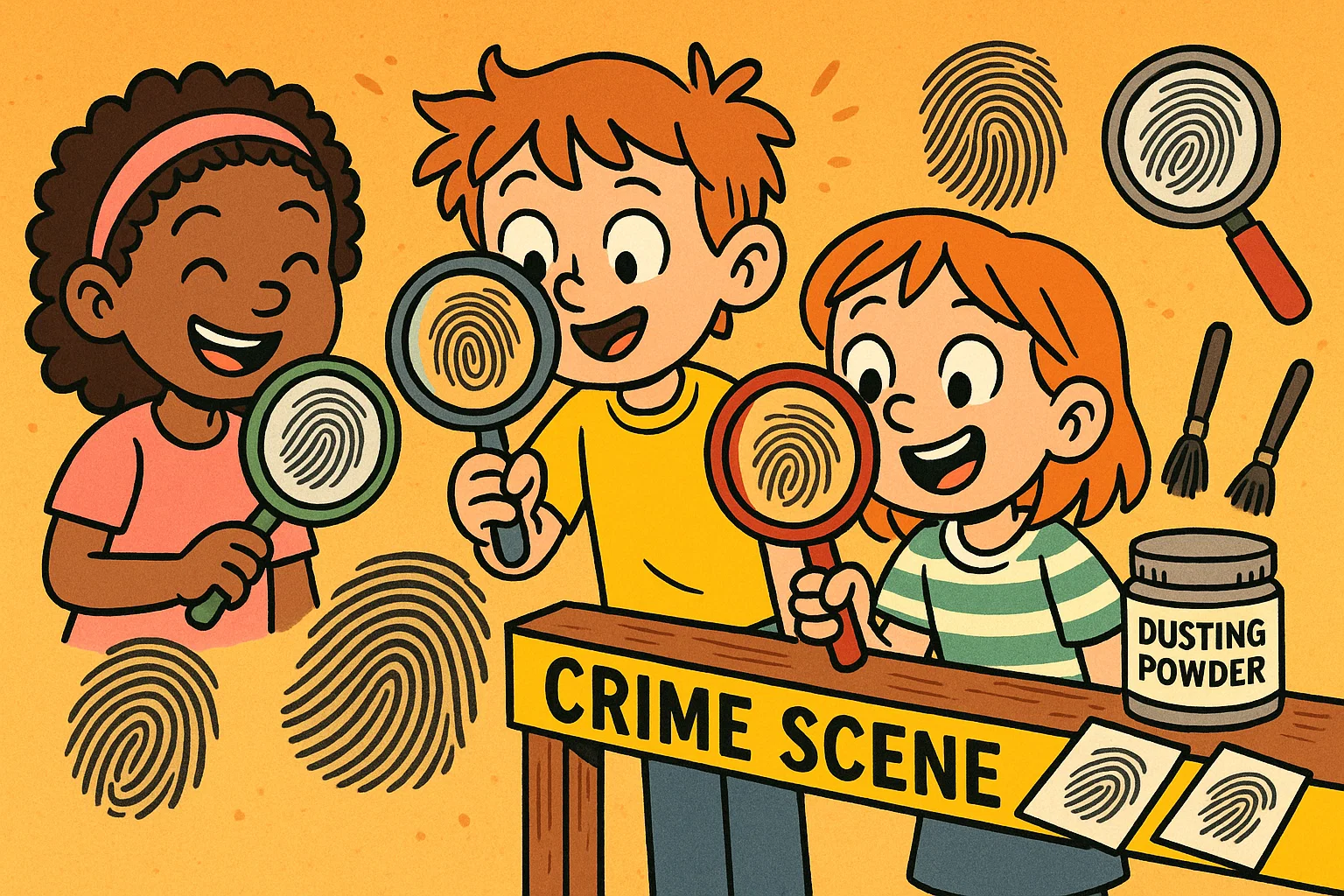
Combine science and sleuthing with a hands-on activity. You can use simple materials to explore the world of forensics.
- Dusting for Prints: Use a soft paintbrush and a bit of cocoa powder on a smooth surface (like a glass or mirror).
- Lifting Prints: Carefully place a clear piece of tape over the dusted print.
- Analysis: Stick the tape onto a white piece of paper to reveal the print. This will encourage a child’s interest in STEM careers and analytical observation.
Logic Riddles and Puzzle Solving
Simple logic puzzles and riddles are easily printable or can be found in books, offering great opportunities to practice skills. Start with simple “who am I?” questions for kids and move up to more complex detective puzzles that require a chart to track information.
Outdoor Mystery Activities for Kids
Outdoor play is a great way to combine physical activity with mental challenges, making for exciting detective adventures.
Treasure Hunts and Scavenger Hunts
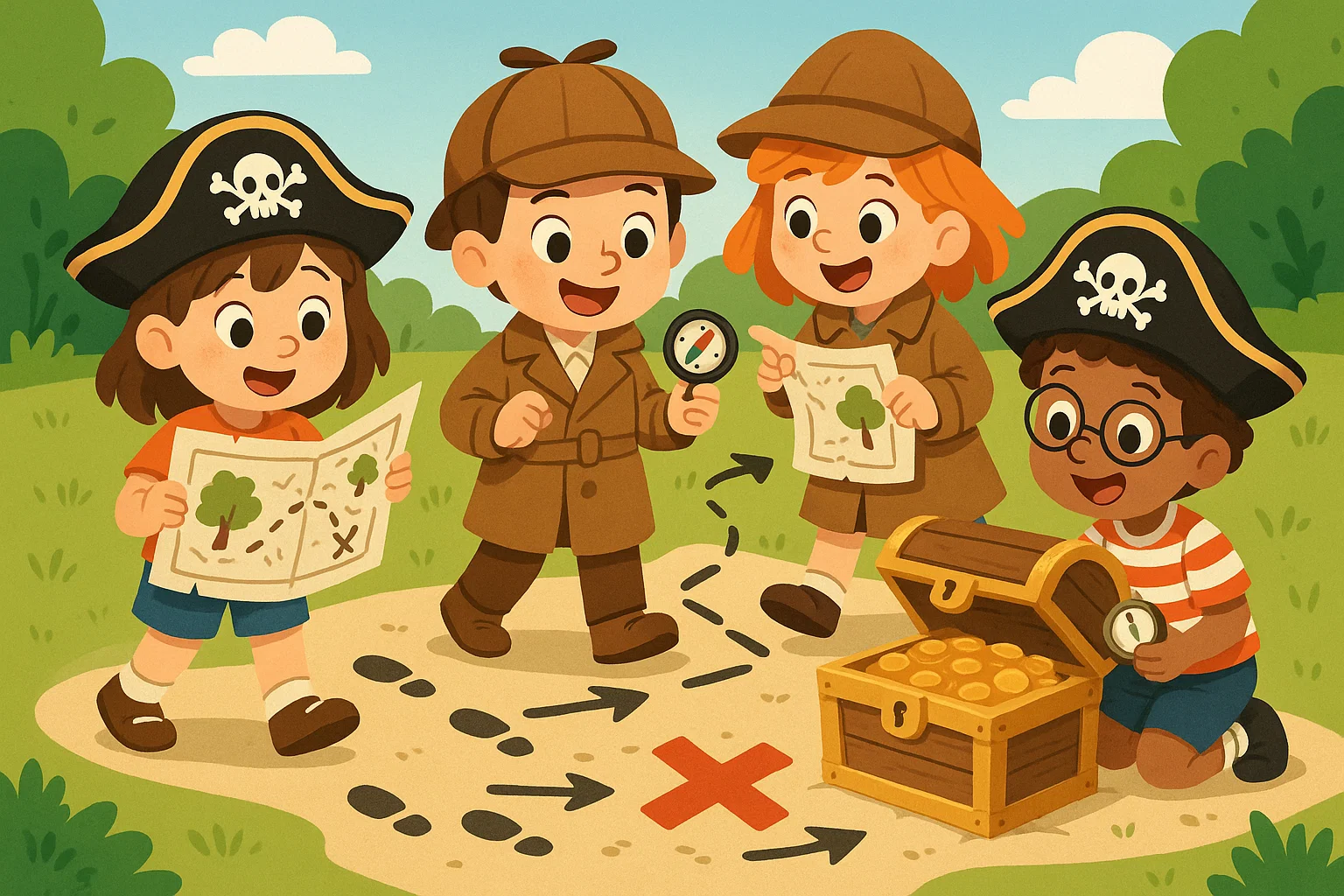
A treasure hunt is a quintessential detective-style game. Instead of just looking for a prize, structure the hunt as a mission where the prize is a “missing artifact” or a “stolen jewel.”
- Themed Clues: Use printable treasure hunt riddles written as secret codes or coordinates, requiring a child to solve each challenge to find the next location.
- “Missing” Items: Hide a key object and have the kids interview the “witnesses” (parents or siblings) for hints.
Spy Missions and Secret Agent Role-Play
Turn your backyard into a secret agent training ground. Create a simple obstacle course and give your kids a game kit with tasks. They must use their agility and cunning to complete the mission.
Nature Detective Games
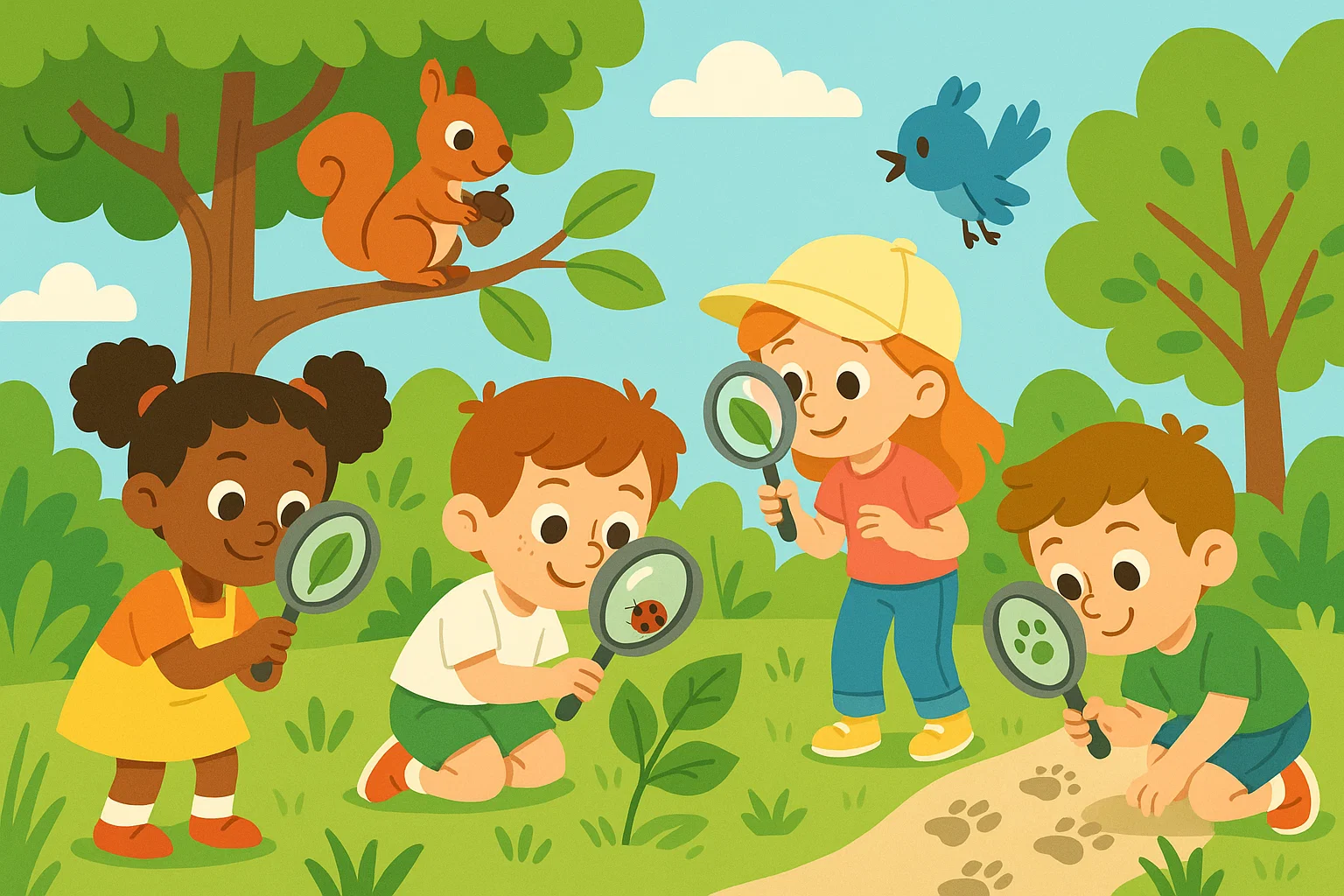
These observation-based activities are perfect for teaching children about their environment.
- Tracking: Look for animal tracks, broken branches, or other signs to figure out which animals passed through a certain area.
- The “Unnatural” Item: Hide a few objects that don’t belong in nature (a colorful button, a plastic toy) and challenge children to see who can spot the most out-of-place clues.
Mystery Games by Age
Tailoring the complexity of the activity to your child’s developmental stage is key to making sure they are engaged, not frustrated.
| Age Group | Recommended Mystery Activities | Core Skill Focus |
| Toddlers (Ages 2–3) | Simple “What’s Missing?” games, color or sound hunts. | Basic object permanence and recognition. |
| Preschool (Ages 4–5) | Simple treasure hunts (picture clues), I Spy, basic sequencing puzzles. | Following instructions, visual discrimination. |
| School-Age (6–9) | Beginner escape room play, printable worksheets, creating secret messages. | Logical thinking, simple ciphers, reading comprehension. |
| Older Kids (10–12) | Advanced role-play mysteries (age-appropriate), complex logic puzzles, secret codes. | Deductive reasoning, planning, complex problem-solving. |
Middle school students in the 10–12 range particularly enjoy the social aspect of more involved mystery party games that require character development and plot twists.
DIY Mystery Activities at Home
You don’t need expensive board games or kits to set up exciting detective fun. The best, most engaging activities often use simple household items.
Detective Role-Play With Household Clues
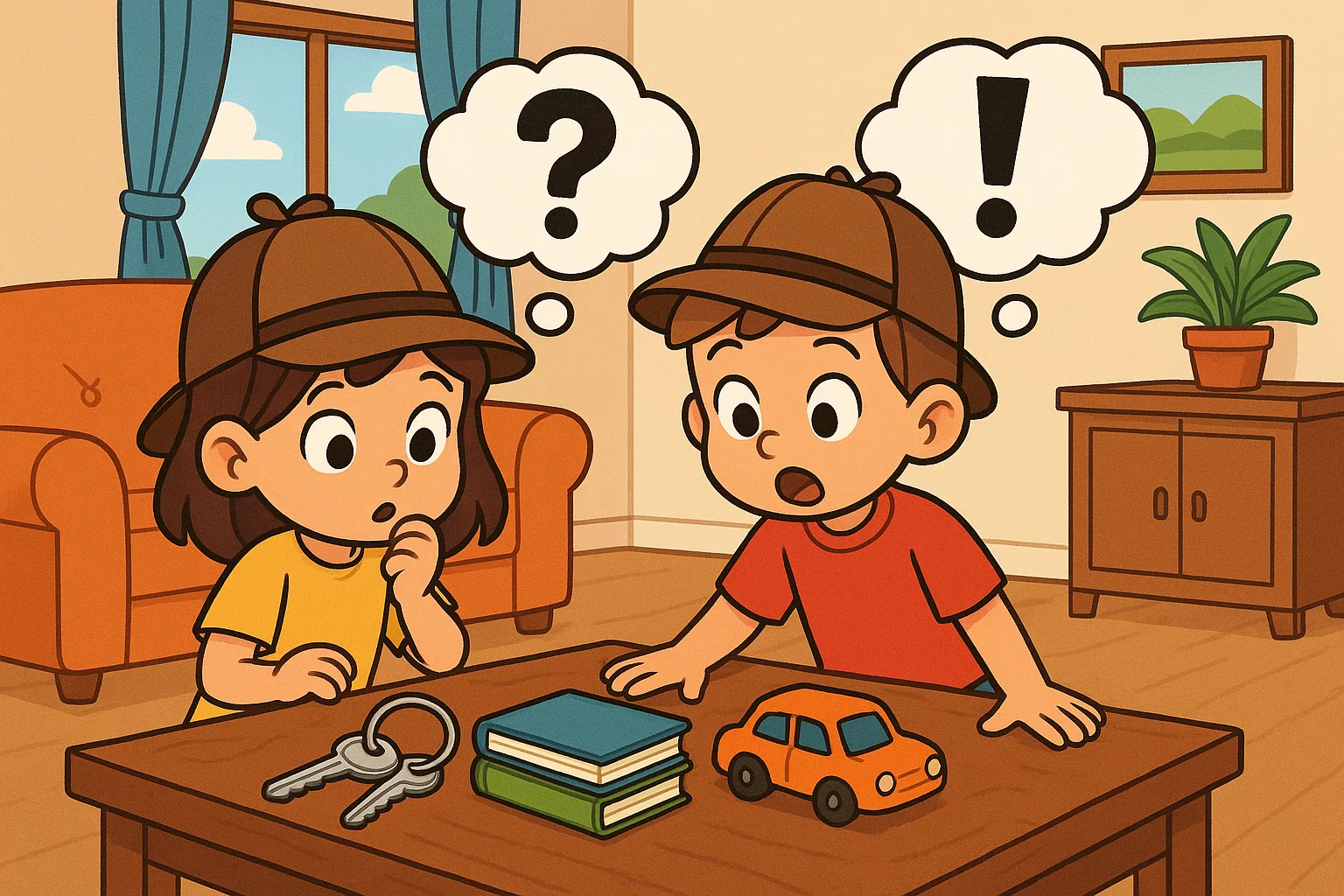
Set up a scenario where a common item has “gone missing.” For example, “The Case of the Missing Cookie Jar Key.”
- Clue Trail: Leave subtle hints: a faint trail of flour, a small riddle on a napkin, or an alibi to check.
- Interviewing Suspects: Have family members take on roles. Kids must interview them to solve the case.
Code-Breaker Challenges
You can easily create your own simple ciphers for games that strengthen children’s pattern recognition skills.
- The Caesar Cipher: Substitute each letter with the letter three spots after it in the alphabet (A becomes D, B becomes E, etc.).
- Symbol Substitution: Create a key where each letter is assigned a different symbol or number. This is a perfect puzzle challenge to teach creative problem-solving.
Create Your Own Spy Academy
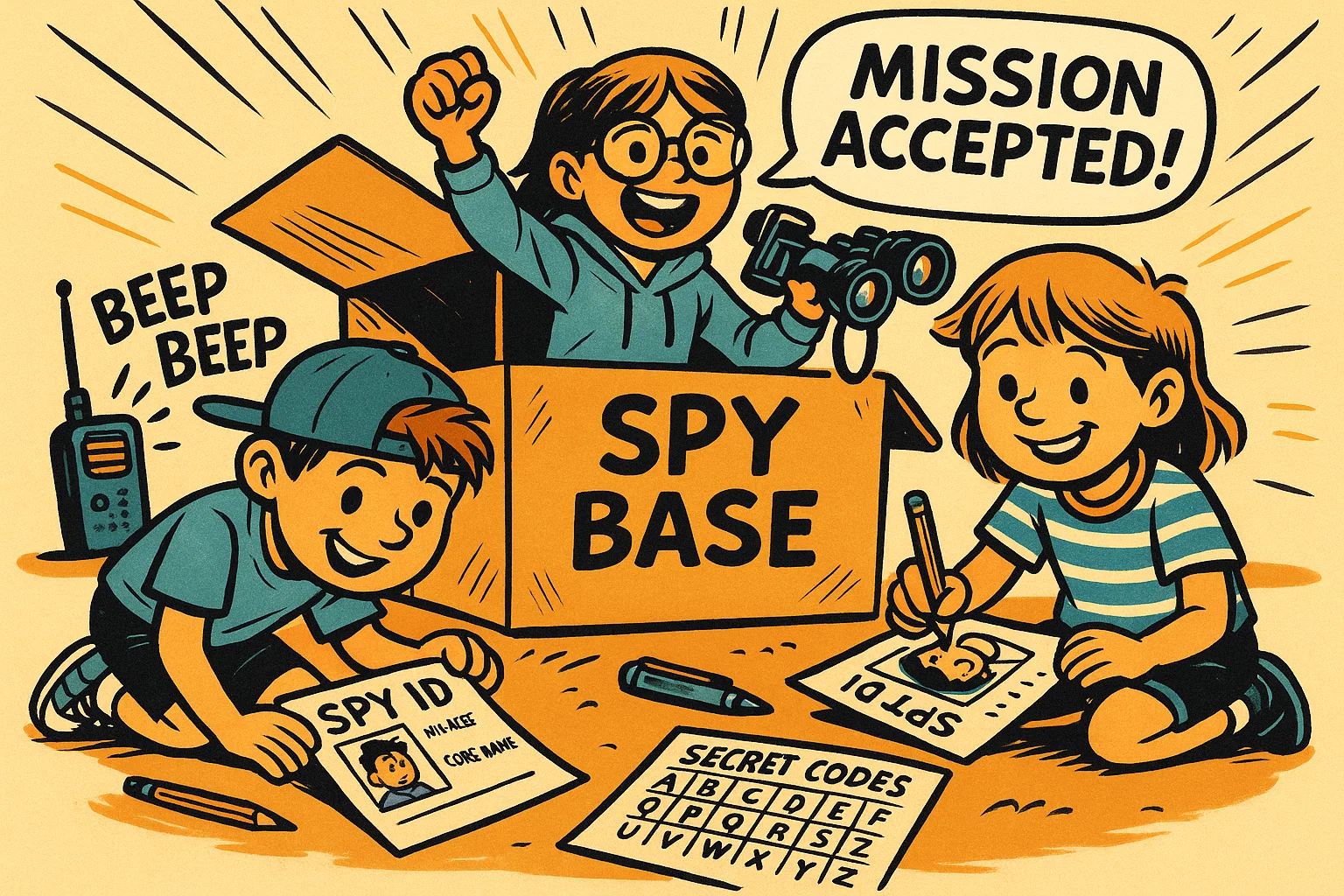
Give your kids a notebook and a “Spy ID” and assign them educational missions throughout the house. Children learn best through immersive play.
Mystery Party Games for Kids
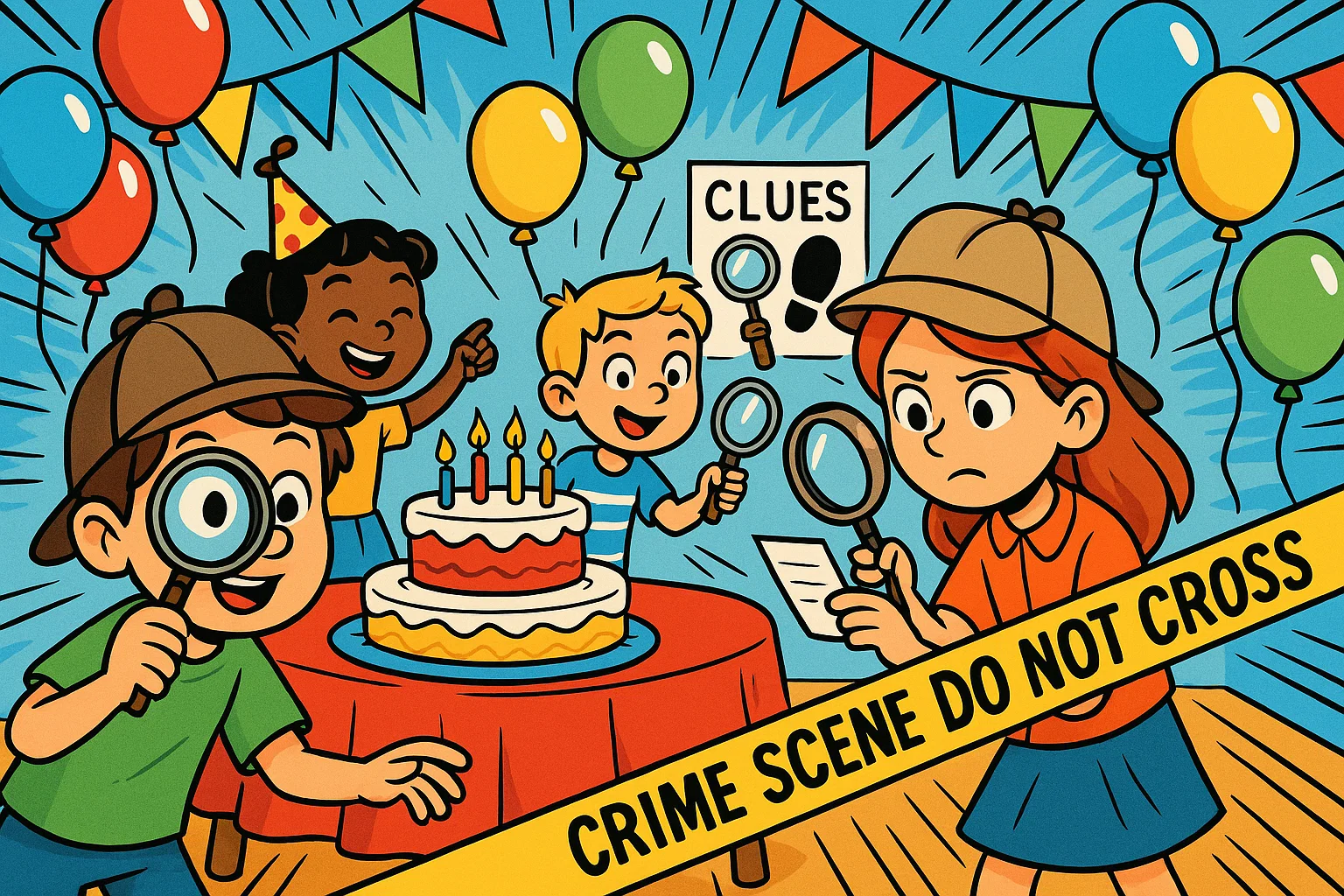
A mystery party is an unforgettable way to celebrate a birthday or host a family game night.
Escape Room Kits and Printables
A well-designed printable escape room provides a ready-made structure for a thrilling event. These resources often include puzzles, ciphers, and clues you need to stage a fully immersive experience.
Crime Scene Investigation Party
Staging a simple, age-appropriate “crime scene” (like a spilled pile of “gold coins” or a “stolen” mystery item) allows little detectives to use their full range of detective skills to solve the problem. Provide them with magnifying glasses and notebooks to document the evidence.
Digital Mystery Games and Apps for Kids
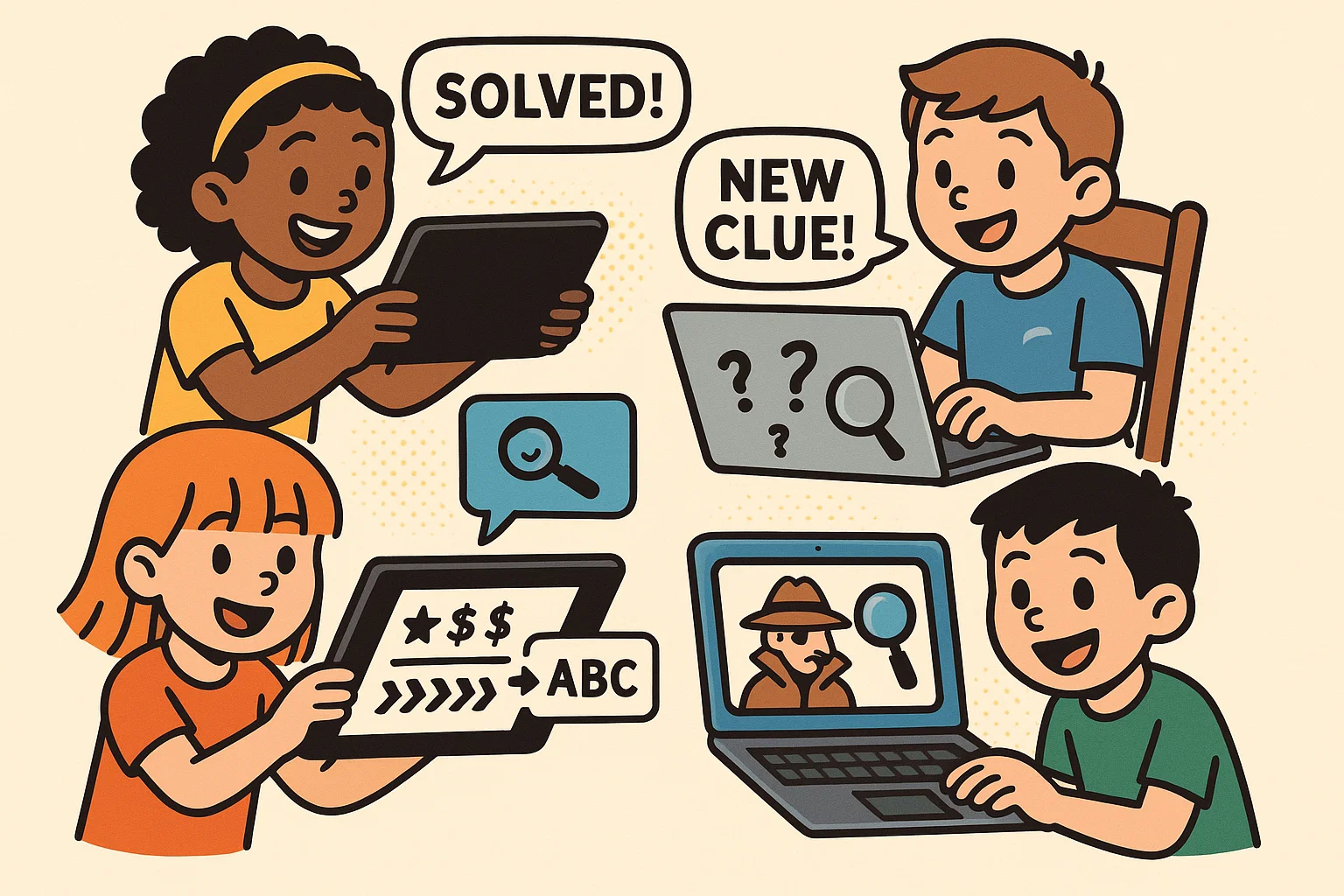
Technology can also be a valuable tool for building problem-solving skills.
Detective-Themed Learning Apps
Many apps are designed to improve logical thinking and memory through detective storylines. Look for ones that focus on sequence, spatial reasoning, and pattern completion, which are all skills needed to solve mysteries.
Printable Worksheets and Online Puzzles
A quick search for free printable detective activities or mystery quizzes can yield a wealth of resources for reinforcing classroom learning in a fun and engaging way.
Mystery Activities for Critical Thinking in Education
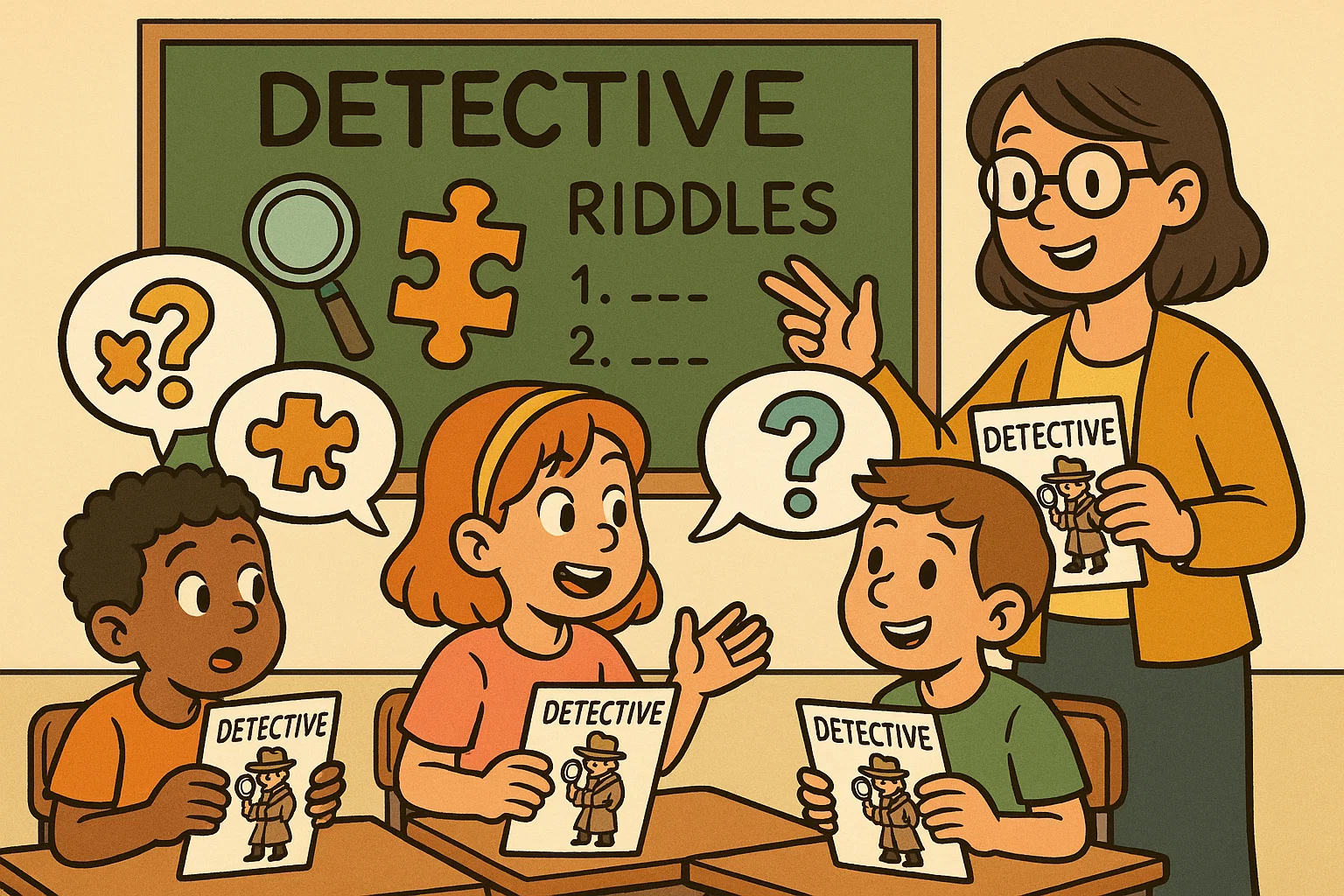
Mystery games are not just for playtime; they are powerful educational tools.
Using Mystery Games in the Classroom
Teachers can use a classic mystery or a scenario-based puzzle to introduce new concepts. For example, a “History Mystery” where students must use primary source clues to identify a historical figure.
Cross-Curricular Mystery Activities
- Math Mystery: A riddle that requires students to solve a series of clues using mathematical equations.
- Science Mystery: A fun game where students use observation to figure out which liquid caused a reaction.
Storytelling and Creative Writing Prompts
Engage children by having them write their own mystery stories. They must develop a plot, create believable suspects, and weave in clues that their reader must follow. This practice helps them understand narrative structure and character development.
Conclusion: Mystery Activities for Kids, Games, and Learning Benefits
Introducing your child to detective-style play is a wonderful way to foster a lifelong love of learning and problem-solving. From a simple treasure hunt on a rainy day to an elaborate party, these educational activities teach children to think creatively, work with others, and approach challenges with excitement. By putting on their detective hats and using problem-solving skills, kids will love the thrill of trying to solve the puzzle and unlock secrets the world has to offer. Through playful adventures, children gain the confidence to tackle problems in life—all through the joy of play.
FAQ on Mystery Activities for Kids
What Age is Best for Mystery Activities?
Mystery activities for kids are suitable for all ages, from toddlers to adults. The key is complexity. Simple guessing games work for ages 2–4, while more complex riddles, board games, and escape room challenges are perfect for older kids.
Do Mystery Games Improve Problem-Solving?
Absolutely. Detective activities are one of the most effective ways to teach problem-solving skills. They demand logical thinking, patience, and deductive reasoning—the core elements of effective problem resolution.
Are Mystery Activities Good for Group Play?
Yes, they are excellent for group play! Activities like a treasure hunt or a party naturally promote teamwork, communication, and collaboration, as children must share information and combine skills to solve the final puzzle.
How Can Parents Make DIY Mystery Games?
Parents can make DIY detective adventures easily by:
- Creating a simple premise: A missing item or a secret agent mission.
- Developing a trail of clues: Use riddles, simple ciphers, or directional instructions.
- Using household items: Toys, books, and furniture are perfect hiding spots.
- Keeping it fun: The goal is to encourage a child to use their detective skills, not to stump them completely.
